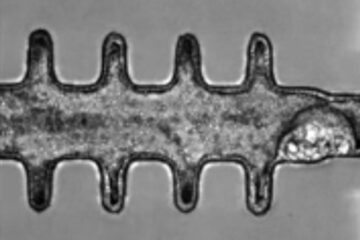MRI can predict risk of heart attacks

For the first time, researchers have shown that magnetic resonance imaging (MRI) can predict the risk of heart attacks or cardiac deaths in coronary heart disease patients, according to a report in today’s rapid access issue of Circulation: Journal of the American Heart Association.
MRI can be used to locate tissue damage in a heart attack or pinpoint blockages, but it has not been used to predict heart attacks.
“This study is the first to determine that MRI is a strong prognostic forecaster,” says lead author W. Gregory Hundley, a cardiologist and associate professor of internal medicine and radiology at the Wake Forest University School of Medicine in Winston-Salem, N.C. “Such information is important because it helps us identify which patients should receive more aggressive treatment.”
Some medical centers use MRI to identify sites of reduced blood flow in the heart, which can cause chest pain, and to measure how much blood is ejected by the left ventricle – the heart’s main pumping chamber.
Hundley and his colleagues examined 279 men and women referred for MRI stress testing after their ultrasound screenings for heart disease were inconclusive. In an MRI stress test, drugs are used to stress the heart, then researchers study the reaction. Hundley notes the study yielded several important findings:
· Regardless of other risk factors, MRI can predict fatal and nonfatal heart attacks in patients whose left ventricle pumps out less than two-thirds of the blood a normal heart ejects;
· Someone whose damaged heart wall moves better at rest than when stressed also has an elevated risk; and
· The location in the heart of reduced blood flow or muscle damage apparently influences risk. Reduced blood flow in the apex of the left ventricle indicates a higher risk.
“These findings have interesting implications,” Hundley says. “Patients with isolated disease near the base and the middle of the ventricle often are referred for procedures to restore blood flow. This study suggests that in doing so, you might alleviate chest pain but not prevent a cardiac death.”
Co-authors are Timothy M. Morgan, Ph.D.; Christina M. Neagle, L.P.N.; Craig A. Hamilton, Ph.D.; Pairoj Rerkpattanapipat, M.D.; and Kerry M. Link, M.D. The study was partly funded by the National
CONTACT: For journal copies only,
please call: (214) 706-1396
For other information, call:
Carole Bullock: (214) 706-1279
Bridgette McNeill: (214) 706-1135
Media Contact
All latest news from the category: Health and Medicine
This subject area encompasses research and studies in the field of human medicine.
Among the wide-ranging list of topics covered here are anesthesiology, anatomy, surgery, human genetics, hygiene and environmental medicine, internal medicine, neurology, pharmacology, physiology, urology and dental medicine.
Newest articles

Solving the riddle of the sphingolipids in coronary artery disease
Weill Cornell Medicine investigators have uncovered a way to unleash in blood vessels the protective effects of a type of fat-related molecule known as a sphingolipid, suggesting a promising new…

Rocks with the oldest evidence yet of Earth’s magnetic field
The 3.7 billion-year-old rocks may extend the magnetic field’s age by 200 million years. Geologists at MIT and Oxford University have uncovered ancient rocks in Greenland that bear the oldest…

Mini-colons revolutionize colorectal cancer research
As our battle against cancer rages on, the quest for more sophisticated and realistic models to study tumor development has never been more critical. Until now, research has relied on…





















